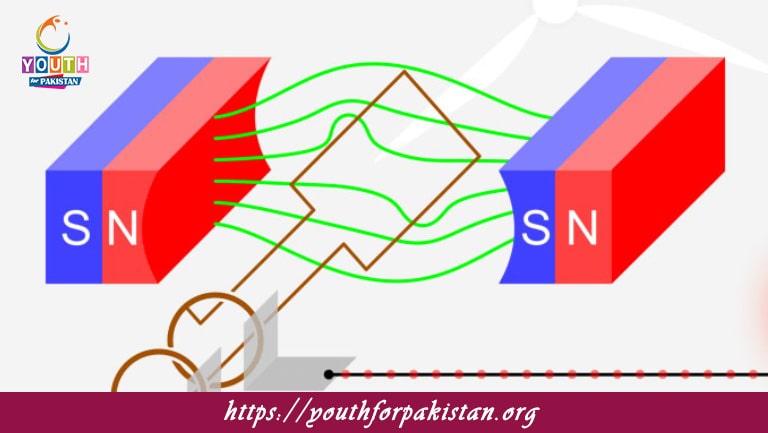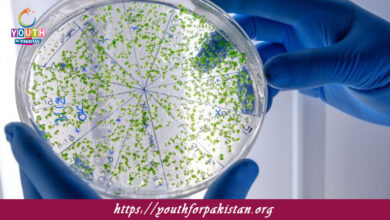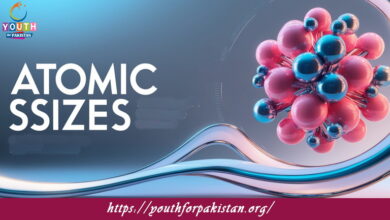Alternating Current Generator MDCAT MCQs with Answers

Welcome to the Alternating Current Generator MDCAT MCQs with Answers. In this post, we have shared Alternating Current Generator Multiple Choice Questions and Answers for PMC MDCAT 2024. Each question in MDCAT Physics offers a chance to enhance your knowledge regarding Alternating Current Generator MCQs in this MDCAT Online Test.
Alternating Current Generator MDCAT MCQs Test Preparations
What is the primary function of an alternating current (AC) generator?
a) Convert AC to DC
b) Convert mechanical energy to electrical energy
c) Store electrical energy
d) Increase the voltage of DC
Which of the following is a key component of an AC generator?
a) Transformer
b) Rectifier
c) Rotor
d) Battery
In an AC generator, the rotating coil is called the:
a) Stator
b) Armature
c) Commutator
d) Field coil
What is the function of the commutator in an AC generator?
a) Convert AC to DC
b) Maintain constant speed
c) Collect and distribute current
d) Increase voltage
What is the purpose of the stator in an AC generator?
a) Produce a rotating magnetic field
b) Provide mechanical support
c) Generate electrical current
d) Rotate the coil
The frequency of the AC output of an AC generator is primarily determined by:
a) The speed of the rotor
b) The number of poles
c) The size of the coil
d) The strength of the magnetic field
Which of the following affects the voltage generated by an AC generator?
a) Speed of rotation
b) Size of the coil
c) Number of turns in the coil
d) All of the above
The peak voltage in an AC generator is:
a) The average voltage
b) The root mean square (RMS) voltage
c) The maximum voltage
d) The minimum voltage
In an AC generator, the process of electromagnetic induction occurs in the:
a) Rotor
b) Stator
c) Commutator
d) Capacitor
The alternating current produced by an AC generator is:
a) Unidirectional
b) Bidirectional
c) Steady
d) Constant
What is the purpose of the slip rings in an AC generator?
a) Convert AC to DC
b) Provide a continuous electrical connection
c) Increase the efficiency of the generator
d) Control the speed of the rotor
The voltage induced in an AC generator is proportional to:
a) The current
b) The resistance
c) The rate of change of the magnetic field
d) The temperature
In an AC generator, the direction of current flow reverses:
a) Every second
b) Every minute
c) At the frequency of the generator
d) At the speed of the rotor
The term “frequency” in an AC generator refers to:
a) The rate at which the current flows
b) The speed of the rotor
c) The number of cycles per second
d) The strength of the magnetic field
The effectiveness of an AC generator is increased by:
a) Increasing the number of turns in the coil
b) Decreasing the speed of rotation
c) Reducing the size of the coil
d) Using a weaker magnetic field
The phase difference between the voltage and current in an AC generator is called:
a) Voltage drop
b) Power factor
c) Impedance
d) Phase angle
In a generator, the term “armature” refers to:
a) The stationary part of the machine
b) The rotating part of the machine
c) The magnetic field
d) The electrical output terminals
What type of current is generated by an AC generator?
a) Direct current
b) Pulsating current
c) Alternating current
d) Static current
The voltage waveform produced by an AC generator is typically:
a) Square wave
b) Triangular wave
c) Sine wave
d) Pulse wave
In an AC generator, the amplitude of the generated voltage is affected by:
a) The resistance of the coil
b) The speed of the rotor
c) The frequency of the current
d) The capacitance of the circuit
Which of the following components in an AC generator is responsible for generating the magnetic field?
a) Rotor
b) Stator
c) Field coil
d) Commutator
The power output of an AC generator is given by the product of:
a) Voltage and current
b) Voltage and frequency
c) Current and resistance
d) Frequency and resistance
In an AC generator, the magnetic field is produced by:
a) The armature
b) The commutator
c) The field coil
d) The slip rings
Which of the following is NOT a factor that affects the output voltage of an AC generator?
a) Speed of rotation
b) Number of coil turns
c) Frequency of the output
d) Magnetic field strength
What is the function of the slip rings in an AC generator?
a) Transfer electrical energy from the rotor to the external circuit
b) Convert AC to DC
c) Increase the mechanical power of the generator
d) Control the speed of the rotor
What does the term “induced voltage” refer to in an AC generator?
a) Voltage generated due to the movement of the coil in a magnetic field
b) Voltage due to the external power supply
c) Voltage generated by static charges
d) Voltage produced by thermal effects
The efficiency of an AC generator is affected by:
a) The amount of fuel used
b) The temperature of the environment
c) Mechanical losses and electrical losses
d) The color of the generator
Which type of wave is commonly produced by an AC generator?
a) Square wave
b) Sine wave
c) Triangular wave
d) Pulse wave
The speed of the AC generator’s rotor determines the:
a) Resistance of the generator
b) Voltage output
c) Frequency of the generated AC
d) Type of magnetic field used
Which of the following components is NOT typically found in an AC generator?
a) Slip rings
b) Commutator
c) Rotor
d) Stator
What is the main purpose of the field coil in an AC generator?
a) To create a rotating magnetic field
b) To support the armature
c) To increase the mechanical speed
d) To convert AC to DC
In an AC generator, the voltage waveform can be represented as:
a) A straight line
b) A square wave
c) A sine wave
d) A triangular wave
What determines the frequency of the AC produced by an AC generator?
a) The type of coil used
b) The number of turns in the coil
c) The speed of the rotor
d) The strength of the magnetic field
Which of the following describes the ‘root mean square’ (RMS) voltage of an AC signal?
a) The average voltage over a cycle
b) The peak voltage divided by √2
c) The voltage value at the peak
d) The voltage value at zero crossing
Which component of an AC generator rotates within the magnetic field?
a) Stator
b) Field coil
c) Rotor
d) Slip rings
The term “armature reaction” refers to:
a) The interaction between the armature and the magnetic field
b) The change in armature speed
c) The heat generated by the armature
d) The cooling effect on the armature
Which of the following increases the voltage produced by an AC generator?
a) Increasing the number of coils
b) Decreasing the rotor speed
c) Reducing the magnetic field strength
d) Decreasing the number of turns in the coil
In an AC generator, what is the function of the slip rings?
a) To convert AC to DC
b) To provide continuous electrical connection between the rotor and the external circuit
c) To increase voltage
d) To control the magnetic field
The efficiency of an AC generator can be improved by:
a) Using higher resistance materials
b) Minimizing friction and electrical losses
c) Increasing the temperature of the rotor
d) Decreasing the number of turns in the coil
What does the term “voltage regulation” refer to in the context of an AC generator?
a) The ability to maintain a constant voltage despite changes in load
b) The process of increasing voltage
c) The control of frequency
d) The regulation of current flow
If you are interested to enhance your knowledge regarding Physics, Chemistry, Computer, and Biology please click on the link of each category, you will be redirected to dedicated website for each category.





